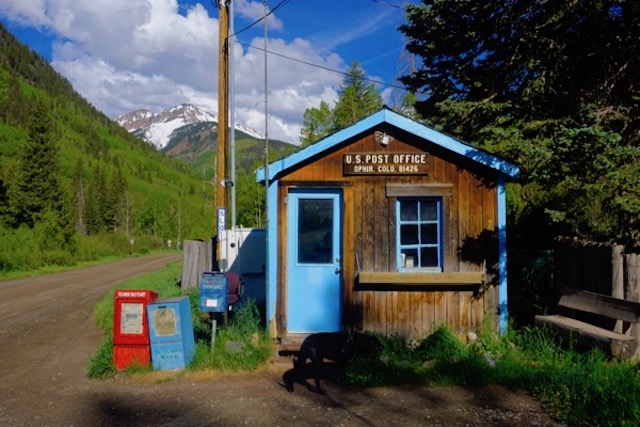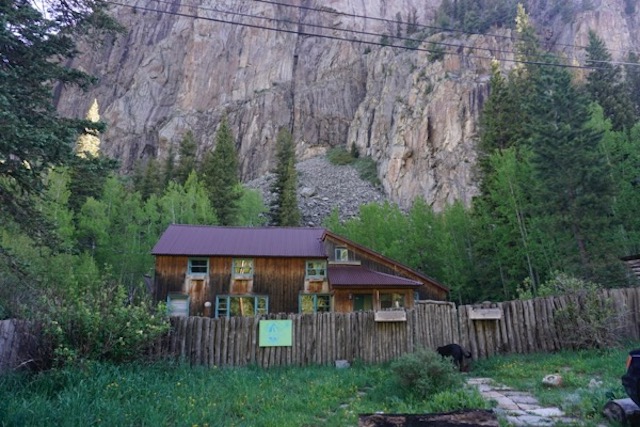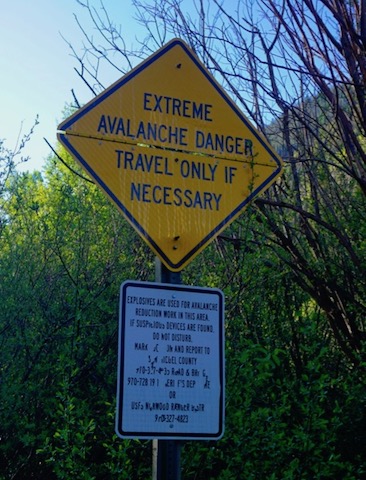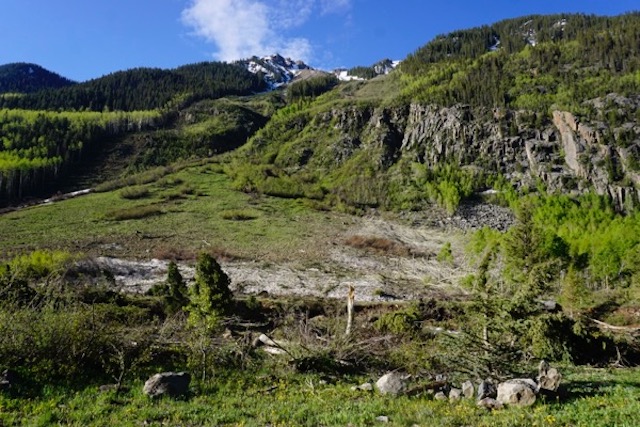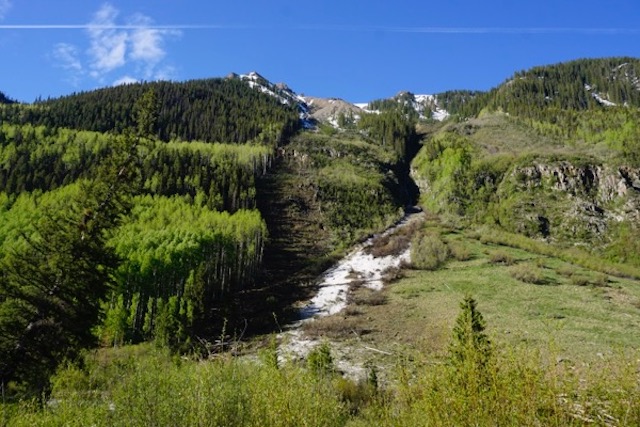Murphy DEP Just Adopted The Same Electric Power Plant Pollution Standards As Trump Repeal of Obama EPA Clean Power Plan
Exactly Like Trump EPA Rollback, Murphy DEP Rule Ignores CO2 Emissions
Exactly Like Trump EPA Rollback, Murphy DEP Rule Based Exclusively On Efficiency
Trump EPA “Heat Rate Improvement” (HRI) Same Technical Efficiency Measure as DEP
This is remarkable hypocrisy
The Murphy DEP recently adopted 2 new rules as part of rejoining the Regional Greenhouse Gas Initiative (RGGI).
One rule deals with the allowance trading program and one rule deals with the allocation of RGGI money.
I finally got around to reviewing the second rule regarding allocation of RGGI money and was shocked by what I found buried at the end of that rule.
In that RGGI rule, the NJ DEP quietly adopted regulations that set specific numeric standards for electric power generating units, see – 7:27D-3.1 State-of-the-art electric generating facilities (page 14)
While these rules deal with eligibility for RGGI money and technically are not codified as air pollution control standards, here’s why I was so shocked.
First of all, it is absurd that fossil power plants are eligible for receiving RGGI money. RGGI is designed to reduce CO2 emissions, not subsidize them.
Second, this RGGI rule making provided an opportunity for NJ DEP to incorporate the Obama EPA Clean Power Plan (CPP) CO2 emission standards in NJ DEP regulations. The Murphy DEP did not do so.
Third, instead of adopting the Obama EPA CPP CO2 standards in NJ DEP rules, the Murphy DEP rejected regulation of CO2 emissions and instead adopted the same flawed approach as the Trump EPA, limiting the application of regulation to individual plant combustion efficiency, not CO2 emissions.
As we all know given the massive media coverage, the Trump EPA recently repealed and revised the Obama EPA “Clean Power Plan” (CPP).
That grossly irresponsible move was blasted by, among many others, Murphy DEP Commissioner McCabe.
In a June 19, 2019 “Statement“, McCabe condemned the Trump EPA rule as a “betrayal” (full “statement”):
“The Trump Administration’s so-called Affordable Clean Energy rule is a betrayal of America’s future generations. By encouraging more coal-fired power generation, this federal action flies in the face of the scientific evidence that burning fossil fuels is causing climate change and harming the health of our people. Instead of facing up to the urgent challenge of reducing carbon emissions, as New Jersey and many other states are doing, the Trump Administration is taking us backwards.”
McCabe is flat out lying here, as I will show below.
NJ is not regulating CO2 emissions from power plants.
DEP just had an opportunity to adopt the Obama EPA Clean Power Plant CO2 emission standards in NJ regulations but did not do so.
Instead, NJ DEP just adopted rules that are virtually the same as the Trump EPA rules.
Here is the argument in a nutshell, which is expanded upon and documented below by excerpts and links to the specific applicable EPA and DEP regulations.
I) The Obama EPA Clean Power Plan Was Based on and Set National CO2 Emission Standards
1. The Obama EPA CPP rule set national standards for CO2 emissions from new or expanded power plants that State’s were required to meet (existing power plants were also regulated, under a separate rule).
State’s were given flexibility in how to meet these national CO2 emission standards, not only at the individual power plant level but across the entire power sector.
The Trump EPA rule summarized State options provided by the Obama EPA rule (see Trump EPA rule (at page 10)
In the CPP, the [Obama] EPA determined that the BSER for CO2 emissions from existing fossil fuel-fired power plants was the combination of: (1) heat rate (e.g., efficiency) improvements to be conducted at individual power plants, in combination with (2, 3) two other sets of measures based on the shifting of generation at the fleet-wide level from one type of energy source to another. The EPA referred to these three sets of measures as “building blocks”:
- Improving heat rate at affected coal-fired steam generating units;
- Substituting increased generation from lower-emitting existing natural gas combined cycle units for decreased generation from higher-emitting affected steam generating units; and
- Substituting increased generation from new zero-emitting renewable energy generating capacity for decreased generation from affected fossil fuel-fired generating units.
While building block 1 relied on measures that could be applied directly to individual sources, building blocks 2 and 3 employed measures that were expressly designed to shift the balance of coal-, gas-, and renewable-generated power across the power grid.
The broad application of the Obama EPA rule beyond “individual sources” to “across the power grid” (or “beyond the fence line”) was the key legal basis for industry, State’s and Trump’s legal attack on the Obama EPA rule.
That is an important point to note in considering the same “individual source” “combustion efficiency” approach adopted by the Murphy DEP.
2. The Obama EPA CPP national CO2 emission standards were EPA’s determination of what is known as the “Best System of Emissions Reductions” (BSER).
3. Obama EPA CPP found that BSER for fossil power plants was calculated based on CO2 emissions per energy output produced, expressed as pounds (lb) per megawatt hour (MWh)
See Table 1 on page 64512 for the specific standards for CO2 emissions rates for specific types of fossil fueled power plants:
- pulverized coal – 1,400 lb/MWh)
- modified or reconstructed steam generating units – 1,800 – 2,000 Lb/MWh
- new gas plants – 1,000 b/MWH
The takeaway and fundamental points are that Obama EPA rule regulated and set national standards for CO2 emissions.
Combustion efficiency was one tool to contribute to meeting these national emission standards.
Read the Obama EPA Rule – Clean Power Plan (CPP) – “Best System of Emissions Reductions” (BSER)
In this action, the EPA is issuing final standards of performance to limit emissions of GHG pollution manifested as CO2 from newly constructed, modified, and reconstructed fossil fuel- fired electric utility steam generating units (i.e., utility boilers and integrated gasification combined cycle (IGCC) units) and from newly constructed and reconstructed stationary combustion turbines. Consistent with the requirements of CAA section 111(b), these standards reflect the degree of emission limitation achievable through the application of the best system of emission reduction (BSER) that the EPA has determined has been adequately demonstrated for each type of unit.
II) Trump EPA Rule Abandoned Regulation of CO2 Emissions and Is Based Solely On Combustion Efficiency
The Trump EPA rule repealed the Obama EPA CPP and replaced it with a rule called the Affordable Clean Energy (ACE) rule.
The fundamental basis for the Trump EPA ACE rule is based on combustion efficiency at the individual plant, not the entire power sector.
In contrast to the Obama EPA CPP rule, the Trump EPA rule is NOT based on CO2 emissions and does not set national CO2 emission standards.
The Trump ACE rule is based exclusively on combustion efficiency, described by the technical term “heat rate improvement” (HRI).
Trump EPA Rule -Affordable Clean Energy (ACE)
the EPA is finalizing ACE, which consists of emission guidelines to inform states in the development, submittal, and implementation of state plans that establish standards of performance for CO2 from certain existing coal-fired EGUs within their jurisdictions. In these emission guidelines, the EPA has determined that the BSER for existing EGUs is based on HRI measures that can be applied to a designated facility….
As this preamble explains, in the case of ACE, the EPA has identified the BSER as a set of heat rate improvement measures. States will establish standards of performance for existing sources based on application of those heat rate improvement measures (considering source-specific factors, including remaining useful life). Each regulated source then must meet those standards using the measures they believe is appropriate (e.g., via the heat rate improvement measures identified by the EPA as the BSER, other heat rate improvement measures, or other approaches such as CCS or natural gas co-firing).
In addition to the distinction between regulating CO2 emissions versus combustion efficiency, another fundamental difference between the Obama EPA CPP and the Trump EPA ACE is the relationship between EPA and the States.
The Obama EPA set national CO2 emission standards that State’s were provided flexibility to achieve.
In contrast, the Trump EPA does not set a national standard and allows State’s to set their own.
Finally, and this is key legally, the Obama EPA CPP rule set national CO2 emission standards that applied to the energy sector as a whole.
In contrast, the Trump EPA ACE rule applies at the individual facility level (measured as combustion efficiency HRI).
III) The Murphy DEP rule does not consider CO2 and is based solely on combustion efficiency
The Murphy DEP recently adopted 2 new rules as part of rejoining the Regional Greenhouse Gas Initiative (RGGI). One rule deal with the allowance trading program and one rule deals with allocation of RGGI money.
I finally got around to reviewing the second rule regarding allocation of RGGI money and was shocked by what I found buried at the end of that rule.
In that RGGI rule, the NJ DEP quietly adopted regulations that set specific numeric standards for electric power generating units, see – 7:27D-3.1 State-of-the-art electric generating facilities (page 14)
The promulgation of these new DEP regulations provided an opportunity for NJ DEP to adopt the prior Obama EPA CPP rules and CO2 emission standards.
NJ DEP could have simply adopted the Obama national CO2 emission standards as the minimum CO2 emissions standards to demonstrate “State of the Art” (SOTA) under NJ DEP air pollution regulations.
However, the Murphy DEP decided NOT to incorporate the Obama EPA CPP CO2 emission standards in NJ DEP SOTA or RGGI regulations.
Worse, instead of adopting the Obama EPA CPP national CO2 emissions standards as NJ SOTA, the DEP adopted new standards that ignore CO2 emissions and are based solely on combustion efficiency.
The NJ DEP combustion efficiency standards are exactly the same approach as the Trump EPA ACE rule. That approach ignores regulation of CO2 emissions and instead is restricted to improving the efficiency of fossil fuel combustion.
The NJ DEP rule also applies only to the individual power plant. Again, exactly like the Trump EPA rule.
Murphy DEP Commissioner McCabe may try to look aggressive by blasting the Trump EPA rules as a “betrayal”, but her own agency’s rules are based on exactly the same flawed approach (combustion efficiency) and also ignore CO2 greenhouse gas emissions.
This is remarkable hypocrisy.
Even more incredible is the fact that these DEP power plant combustion efficiency rules were adopted as part of the RGGI rules regarding allocation of RGGI auction proceeds. hose rules were mandated by the Global Warming Solutions Fund Act.
That is a stealth regulatory policy on a fundamental issue.
You can read the DEP rule by citing the link below and reviewing the excepted text of the rule.
Murphy DEP Rule – 7:27D-3.1 State-of-the-art electric generating facilities (SOTA)
(a) An electric generating unit is state of the art, for purposes of N.J.A.C. 7:27D-2.3(a)1i and ii, if it:
[1.2.]
3. Demonstrates that the electric generating unit meets or exceeds the efficiency thresholds set forth in (b) below.
(b) An electric generating unit shall demonstrate that it meets or exceeds the efficiency thresholds set forth below:
1. If the useful thermal energy output from the electric generating unit is 16 percent or less of its total heat input, the heat rate shall meet one of the following efficiency thresholds:
- For an EGU less than or equal to 40 megawatts of capacity, a heat rate of 6,900 or less British thermal units (Btu) consumed per kilowatt hour of useful electricity output;
- For an EGU greater than 40 megawatts of capacity and less than or equal to 120 megawatts of capacity, a heat rate of 6,550 Btu or less consumed per kilowatt hour of useful electricity output;
- For an EGU greater than 120 megawatts of capacity and less than or equal to 240 megawatts of capacity, a heat rate of 6,400 Btu or less consumed per kilowatt hour of useful electricity output; or
- For an EGU greater than 240 megawatts of capacity, a heat rate of 5,750 Btu or less consumed per kilowatt hour of useful electricity output.
2. If the useful thermal energy output from the electric generating unit is greater than 16 percent of its total heat input, the overall thermal efficiency of the electric generating unit, considering both useful electricity output and useful thermal energy output, shall be at least 65 percent.
(c) The heat rate shall be determined at conditions representing the continuous power output rating that can be counted upon for 6,000 or more hours of operation per year at ISO conditions without exceeding normal gas turbine wear and maintenance.
(d) The heat input shall be determined at ISO conditions.
These standards could have been set, just like Obama EPA set them, as pounds of CO2 emissions per electrical output.
But DEP did not do that – they adopted the same combustion efficiency approach as the Trump EPA rollbacks.


